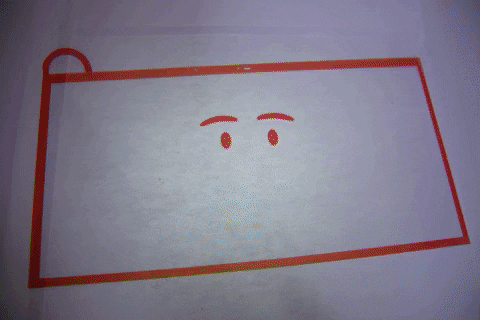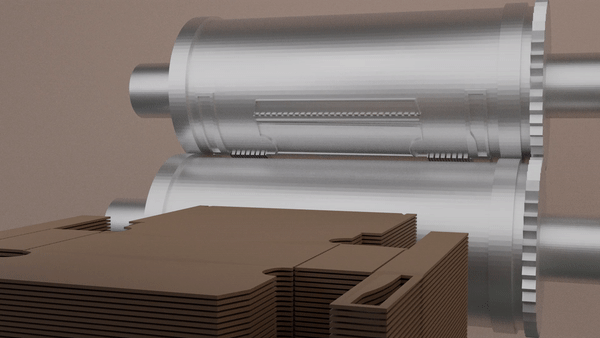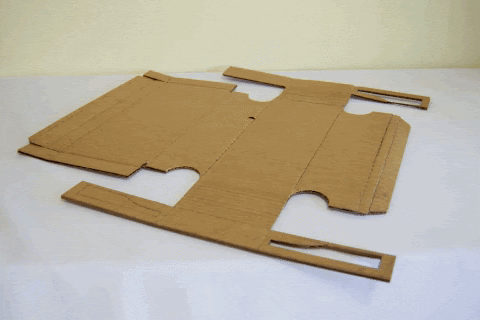
Memory Box
A tool for creativity and communication in Alzheimer's patients

How might Alzheimer’s Disease patients remember and communicate with their loved ones?
15.3B
Hours provided by caregivers in 2020
6M
Americans with Alzheimer's disease
11%
of Americans above 65 have Alzheimer's disease
Memory Box
A tool for creativity and communication in Alzheimer's patients and caretakers/visitors

Starting the process by shadowing my grandmother with late-stage Alzheimer's disease and observing her interactions with her caretaker(my aunt) for three days.
Click on pictures for insights!
Tactile textures were the most stimulating while also provided her the most information. Specifically with fluted paper and cardboard.

Maitri Compassionate Care
Interviewing Maitri Compassionate Care to find out their day to day schedule for all of the Alzheimer's disease patients. Also finding interesting behavioral habits and areas for opportunities.
Click Pages for insights!
Ex construction worker patient with nerve damage cannot close fist but can tightly pinch a pen to write
Some patients only able to move first two digits
Many work by using new poses by hands



Photos not allowed in Maitri so replicated at home to ensure safety amidst COVID pandemic
Patients forget faces last so I will be using faces to communicate stories between patient and caregiver.
Load different slides to communicate faces in stories or as a creative activity
Working in the midst of the corona virus with existing cardboard boxes within my household. Luckily, as a sneakerhead, I had plenty to look at home for inspiration.
I will be using cardboard to keep costs low as care centers are often underfunded.










Exploring different concepts on how graphics can be used to create faces while still be able to be used with shaky hands by both the patient and the caretaker/visitors.










Initial models exploring potential ways of how the memory box can be formed. Deciding to go with slides to engage visually. Also decided to use drop in slides to reference projectors common in late 20th century schools.


Refining early ideation of face slides. Choosing to keep shapes down to primitive shapes to help a friendly aesthetic. The memory box itself has also added a slope to make the slides align easier when dropping in with shaking hands.






Getting feedback from various members in my family household who helped take care of other family who had Alzheimer's disease. The interview questions mainly based on their extent on how they would intuitively use the slides, perceived value, and immediate way to pick up the box. Main feedback was that a button would not work. I would have to find another way to use a power switch. The sheets were also too slippery and difficult to pick up from the table.
Feedback

Choosing to go with a half circle with an 1 1/8th inch inner cut and a 1 3/8th inch outside radius. A quarter of an inch of a vibrant color was enough to signify a handle. 1 and 1/8th inch is wide enough for fingers of different sizes even when shaking.
The Hook


Final exploration of grips for the side of the memory box. Ultimately going with a single indent of pleated cardboard on each side for shaking hands to be able to pick up the box if it ever falls while also providing a soothing texture for the hands.
Tactile Grip

















Trying an aesthetic based around line art. It deemed promising as the style has a playful sentiment but the lack of colors proved unentertaining at initial impressions during feedback. Keeping consistent shapes while also not interfering with layers proved unsuccessful.






























Choosing to finalize on slides based around color. The style is ambiguous enough to apply to many different people while being specific enough for adapted to Alzheimer's patients' memories. Each face part has its own color to categorize the characteristic. This is to encourage memorization to each facial characteristic while also keeping things fun with poppy colors.
ADD FACE SLIDES HERE


Each slide can be drawn upon by common dry erase markers to accommodate for specific features

Press
Provides solid clean cut outs with no folding
Strong and stiff but only fold one way
Cardboard die cut types
Slotted
Cut
Weak and flexible but can fold both ways

Steel-to-Steel Rotary Die Cut for 1/8th Inch Pleated Corrugated Cardboard as Rubber to steel is too slow and will not last as long.

Choosing to make the battery door accessible for the caretaker's hands but making the cutout too small for the Alzheimer's patients from reaching inside and taking the batteries.
Batteries







Light shines through paper referencing light projectors common in schools and presentations in the 1970s

Click pull lever referencing ceiling fan switches common homes built in 1970s-90s



















